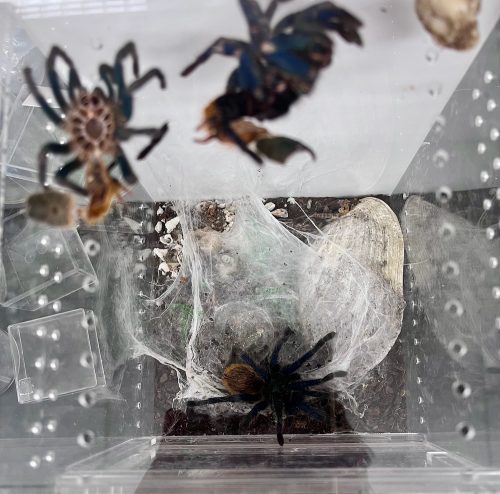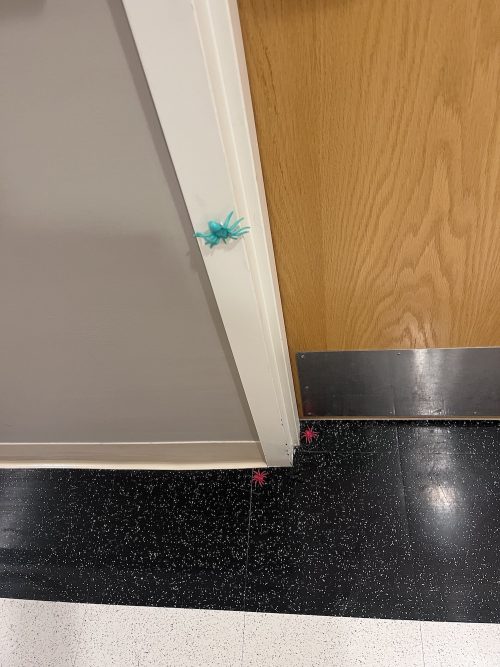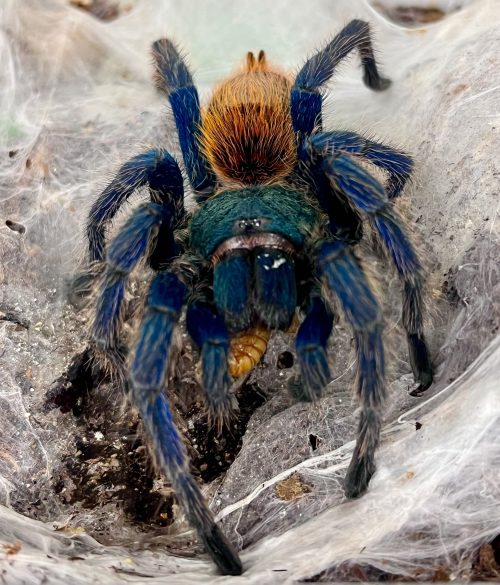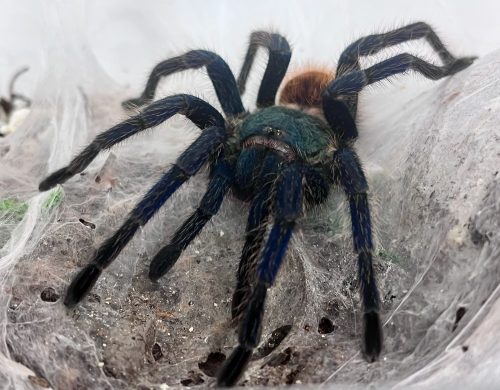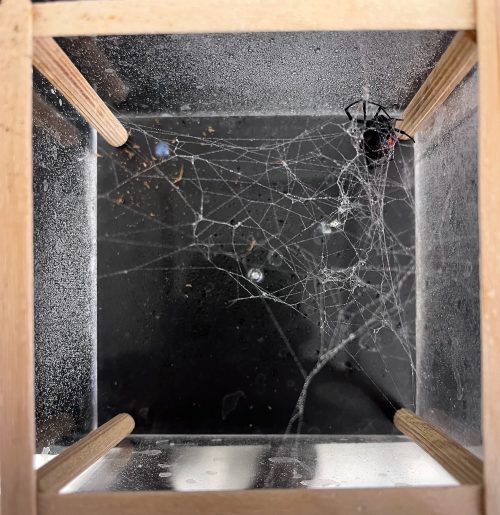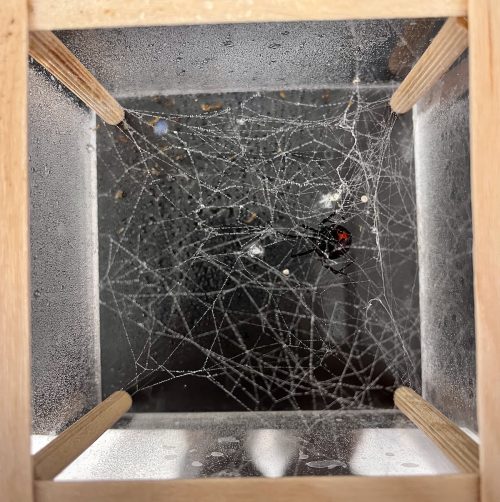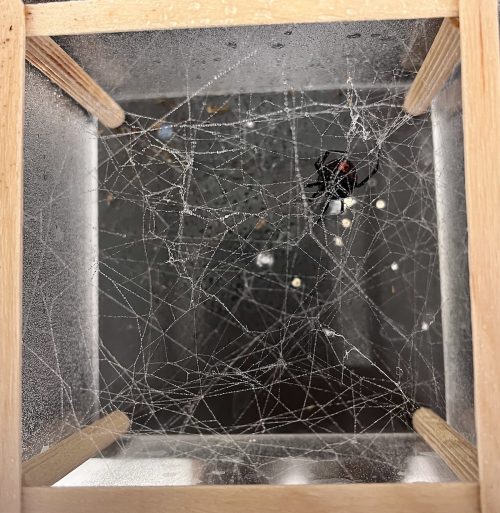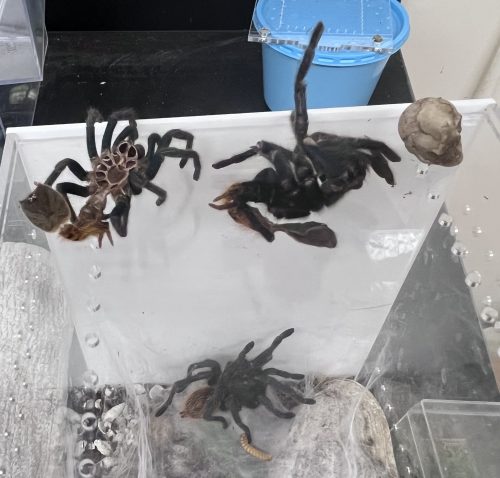She’s been living in a plexiglas cube that used to be quite comfortable for her, but that pile of molts I keep on top is testimony that she just keeps on growing.
So crowded. So shabby. So this morning I relocated her to a huge, roomy 29 gallon fish tank, about 75cm x 25cm, with high class furnishings.
If you want to see it, you can get the full story on Patreon.
OK, if you don’t want to subscribe, I’ve also posted a photo on Instagram.

